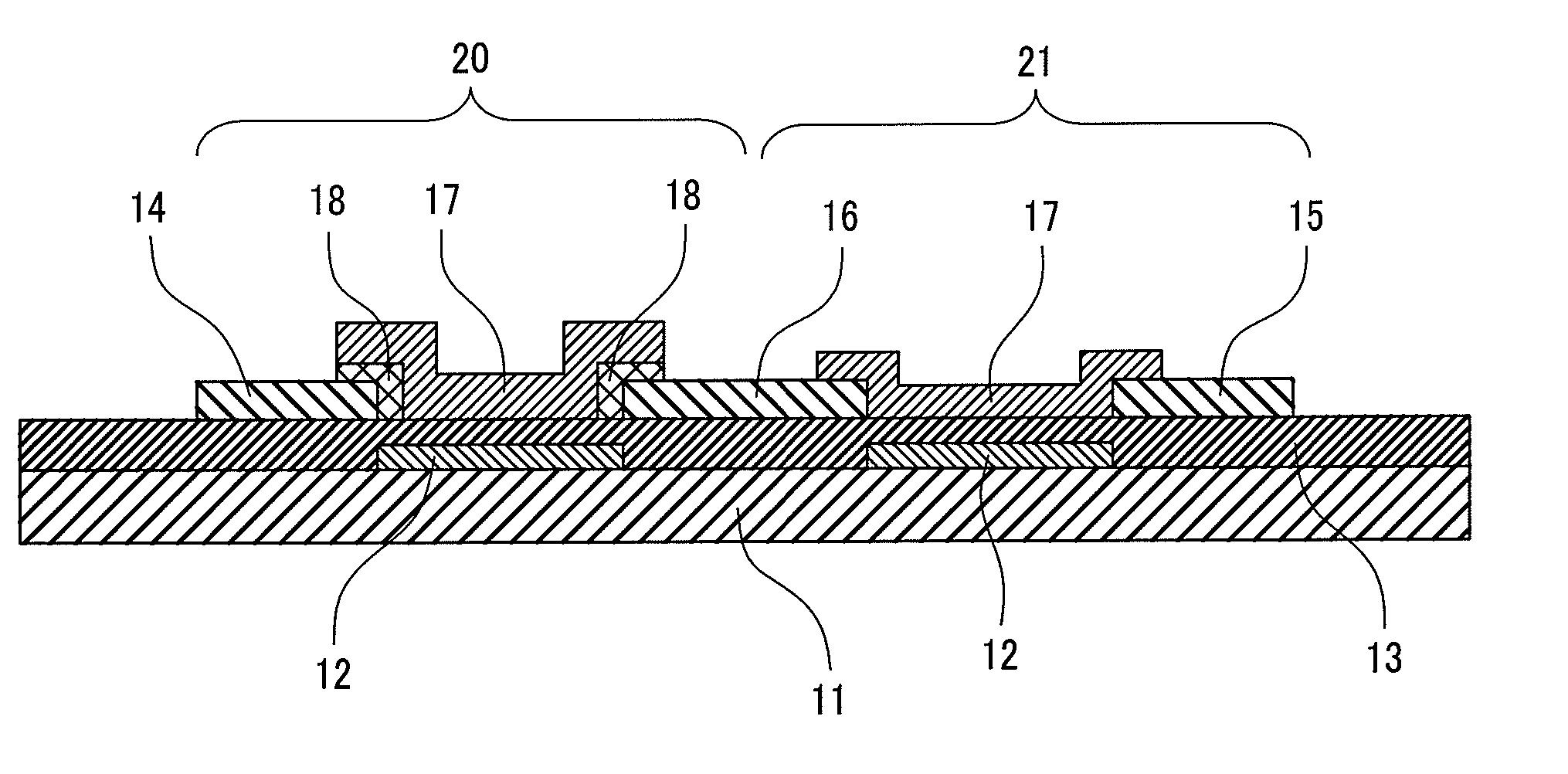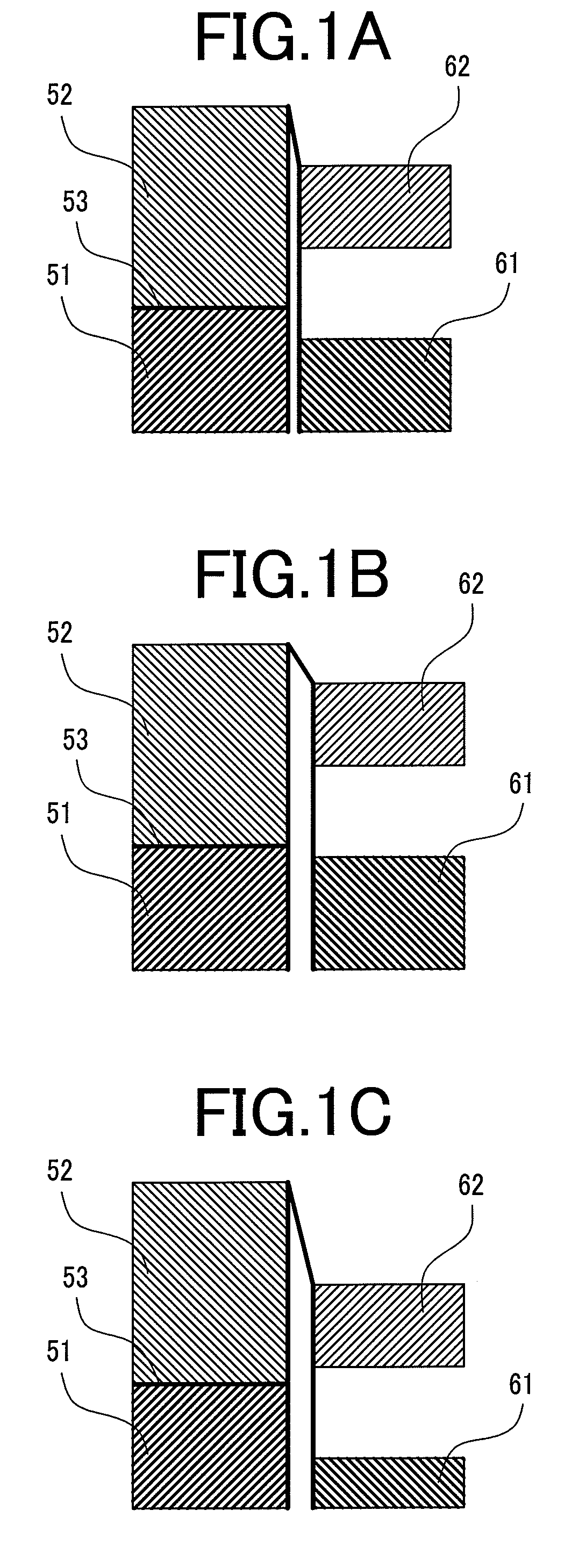Organic Transistor Using Self-Assembled Monolayer
a transistor and monolayer technology, applied in the field of organic transistors, can solve the problems that the formation of a self-assembled monolayer may not remarkably raise the fabrication cost, and achieve the effects of reducing the contact resistance, fabricated inexpensively, and inexpensive operation
- Summary
- Abstract
- Description
- Claims
- Application Information
AI Technical Summary
Benefits of technology
Problems solved by technology
Method used
Image
Examples
embodiment 1
[0028] Embodiment 1 relates to the selection of a material for self-assembled monolayer which facilitates injection of a hole from an electrode to an organic semiconductor that is likely to work as a p-type semiconductor, typified by pentacene. It also relates to a method for forming a junction structure between an electrode and an organic semiconductor using the selected self-assembled monolayer.
[0029] Most of organic semiconductors typified by pentacene have band gaps larger than that of silicon, in which the upper end of the valence band 61 is nearer to the Fermi level 53 of a metal constituting the electrode, such as gold, silver, or copper, than the lower end of the conduction band 62 is. Accordingly, most of such organic semiconductors are more likely to work as p-type semiconductors than to work as n-type semiconductors. Even when they are operated as p-type semiconductors, however, they invite increased contact resistance, because the upper end of the valence band of such o...
embodiment 2
[0043] Embodiment 2 relates to the selection of a material for self-assembled monolayer which enables an organic semiconductor to work as an n-type semiconductor by facilitating injection of an electron from an electrode to the organic semiconductor. The organic semiconductor employed herein is likely to work as a p-type semiconductor as a result of hole injection, typified by pentacene.
[0044] Most of organic semiconductors, such as pentacene, are more likely to work as p-type semiconductors than to work as n-type semiconductors, as described in Embodiment 1. This is because the energy difference between the Fermi level of a metal and the lower end of the conduction band of an organic semiconductor is larger than that between the Fermi level of the metal and the upper end of the valence band of the organic semiconductor. If a self-assembled monolayer causing a sufficiently large potential difference in a reverse direction to that in Embodiment 1 is available, the electron injection...
embodiment 3
[0050] Embodiment 3 relates to a technique of constructing a C-TFT while using, as an organic semiconductor, pentacene that is likely to work as a p-type semiconductor. According to this technique, the self-assembled monolayer described in Embodiment 2 is partially arranged in specific portions between electrodes so as to allow pentacene to work as a p-type semiconductor in a specific portion and to work as an n-type semiconductor in another specific portion.
[0051]FIG. 3 is a cross sectional view schematically illustrating a structure of a C-TFT according to an embodiment (Embodiment 3) of the present invention. An organic thin-film semiconductor 17 in FIG. 3 according to Embodiment 3 is a polycrystalline pentacene thin film composed of pentacene crystal grains. The C-TFT is constituted by a source electrode 14, another source electrode 15, the organic thin-film semiconductor 17, a common drain electrode 16, and two gate electrodes 12. The C-TFT has a structure in which an n-channe...
PUM
 Login to view more
Login to view more Abstract
Description
Claims
Application Information
 Login to view more
Login to view more - R&D Engineer
- R&D Manager
- IP Professional
- Industry Leading Data Capabilities
- Powerful AI technology
- Patent DNA Extraction
Browse by: Latest US Patents, China's latest patents, Technical Efficacy Thesaurus, Application Domain, Technology Topic.
© 2024 PatSnap. All rights reserved.Legal|Privacy policy|Modern Slavery Act Transparency Statement|Sitemap



